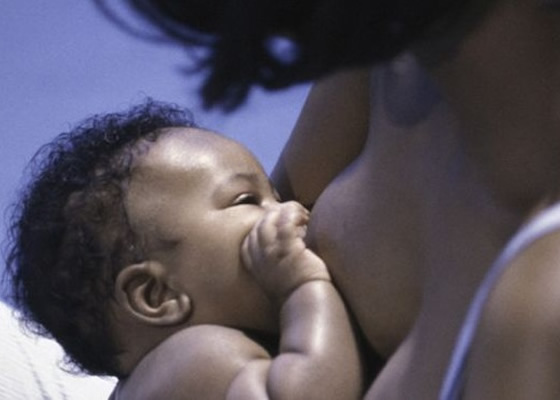Breastfeeding: How To Know If Your Baby Is Getting Enough Breast Milk
- Home
- Breastfeeding: How To Know If Your Baby Is Getting Enough Breast Milk

Breastfeeding: How To Know If Your Baby Is Getting Enough Breast Milk

It is quite common to wonder if your baby is truly drinking enough milk at the breast. It’s nearly impossible to measure the milk because it can’t be seen. So, how do you tell if your baby is getting enough?
For the first few days, your breasts will be making colostrum for your baby. This first milk is thick and sticky but very nutritious and important for the baby’s immune system. Your baby will likely feed often, 8-12 or more times in each 24 hour period. This frequent nursing in the early days helps to signal your breasts to make plenty of milk for your baby.
With frequent nursing over the first few days, your body will transition from the super-rich colostrum to mature milk to match your baby’s changing needs. Your baby will continue to nurse often and start to gain weight.
WHAT ARE SOME SIGNS THAT MY BABY IS WELL FED?
- Baby is nursing frequently, 8-12 times per 24 hour period.
- Baby seems content and happy after a feed, releasing the breast on their own. Their hands may be in fists before feeding, they will then often relax and open.
- Weight gain is as expected, about 155-240 grams or 5.5-8.5 ounces per week until four months of age.
- The baby has periods of obvious gulping of milk during sessions. This is where the baby is getting larger mouthfuls of milk because the mom is having a letdown. Baby’s rapid sucking encouraging the letdown slows during these periods to one suck per second as larger volumes of milk fill their mouths before they swallow, and watching their throats will show the rise and fall that occurs with swallowing.
- Baby’s stools transition to yellow with a loose and seedy texture by day five. Baby should have 3-4 stools every day by four days of age.
- The baby may not pass much urine at first but this increases each day. By day two look for two wet diapers (nappies) over 24 hours, days three and four look for three or more wet diapers each 24 hours. By the time your baby is five days old, wet diapers should be more frequent, usually six or more over 24 hours.
- It can be tricky to tell if disposable diapers are wet – after five full days, when copious milk comes in, they should be heavy.
- Many disposable diapers have a faint line down the middle which changes color when wet.
- Baby is alert and active when awake, and meeting their developmental milestones.
WHAT ARE SOME SIGNS THAT MY BABY MIGHT NOT BE GETTING ENOUGH MILK?
- The baby seems very sleepy or lethargic. Babies who aren’t getting enough milk will have low energy. Baby regularly will sleep 4 or more hours at a time.
- The baby takes too little or too much time at the breast. A baby who is not feeding well may fall asleep shortly after beginning to feed or may take longer than 30-40 minutes per feed.
- Latching is painful or appears shallow. A poor latch can prevent a baby from getting enough milk.
- Baby hasn’t regained their birth weight by 10-14 days old or weight gain is slower than expected. 155-240 grams or 5.5-8.5 ounces per week is normal.
- Baby is not stooling often (they should have 3-4 stools per day by four days old). Baby’s urine is not pale, and/or you see reddish-brown “brick dust” in the diaper.
WHAT CAN I DO IF I DON’T THINK MY BABY IS GETTING ENOUGH?
Most breastfeeding issues, including low supply, can be solved more easily if they are addressed sooner rather than later. Even if you are unsure whether or not there is a problem, talking to a lactation consultant will be helpful. You can achieve great peace of mind knowing that things are indeed going well, or, if they are not, you can get help to improve breastfeeding for you and your baby.
If you are worried your baby isn’t getting enough milk, consider hand expressing your milk. You can feed the expressed milk by teaspoon, cup, or directly into his mouth.
If your baby is showing signs of not getting enough milk, please do not hesitate to seek help from a lactation peer or professional and also your baby’s health care provider. Remember, you are the expert on your baby. If something doesn’t seem right, trust your intuition and reach out for help.
BREASTFEEDING IS MORE THAN MILK.
The physical act of breastfeeding is more than the quantity of milk that is supplied, as you will find when you hold your baby in your arms. Breastfeeding is warmth, nutrition, and love all rolled into one. Understanding and appreciating the signs of knowing when your baby is getting enough to eat is one of the most important things you can learn. If you have any concerns regarding your baby, they should be addressed with your health care provider.
- Share
Classic Ghana
Classic Ghana brings you into a fun world of arts, entertainment, fashion, beauty, photography, culture and all things in between. Let’s explore these together!







